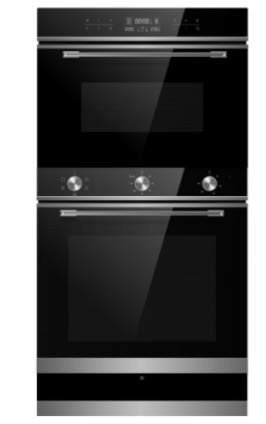Understanding Ovens and Hobs: A Comprehensive Guide
When it comes to cooking devices, ovens and hobs are among the most vital tools discovered in contemporary kitchens. They play critical functions in meal preparation, changing raw ingredients into delicious meals. Comprehending our homepage in between different types of ovens and hobs and how to pick the right one can make a substantial difference in cooking effectiveness and food quality.
This short article explores ovens and hobs in detail, offering insights into their types, features, benefits, and typical FAQs. Whether you are a seasoned chef or an amateur cook, this details will help you make notified choices for your culinary requirements.
Kinds of Ovens
Ovens come in numerous types, each created for specific cooking methods and styles. Here is an in-depth take a look at the most common types of ovens:
| Type of Oven | Description | Best For |
|---|---|---|
| Conventional Oven | Utilizes heating components located at the top and bottom for even cooking. | Baking, roasting, and general cooking |
| Stove | Features a fan that circulates hot air for quick and even cooking. | Baking pastries and cookies, roasting meats |
| Steam Oven | Utilizes steam to cook food, protecting moisture and nutrients. | Veggies and fish |
| Microwave | Quickly cooks food using microwave radiation. | Reheating and quick meals |
| Wall Oven | Built straight into the wall for space-saving cooking services. | Small kitchens and contemporary designs |
| Skill Level | Provides multiple cooking modes including baking, broiling, and toasting. | Versatile cooking requires |
Kinds of Hobs
Hobs, likewise referred to as cooktops, been available in different types based on their fuel source and design. Comprehending these alternatives can assist in finding the ideal suitable for your kitchen setup:
| Type of Hob | Description | Best For |
|---|---|---|
| Gas Hob | Uses gas flames for cooking, supplying immediate heat control. | Standard cooking approaches |
| Electric Hob | Uses electric coils or induction components to heat pots and pans. | Even heat circulation |
| Induction Hob | Utilizes electromagnetic energy to directly heat pots, providing quick and effective cooking. | Energy-efficient cooking |
| Strong Plate Hob | A type of electric hob with solid plates that requires time to heat up however keeps heat well. | Sluggish cooking |
| Ceramic Hob | Functions a glass-ceramic surface enabling simple cleansing, with electric heating components below. | Aesthetic appeal |
Factors to Consider When Choosing an Oven and Hob
Picking the right oven and hob combination needs mindful consideration of numerous elements. Below is a list of vital elements to remember:
Cooking Style
- Are you a daily cook or an occasional baker?
- Do you prefer steaming or frying?
Kitchen Size
- What area is offered in your kitchen for the appliances?
- Will you need built-in or freestanding models?
Fuel Source
- Do you have access to gas, or would you choose electric?
- Are you thinking about induction cooking technology?
Budget plan
- What is your spending plan for buying an oven and hob?
- Are you considering a high-end design or a more budget-friendly alternative?
Energy Efficiency
- Are you wanting to lower your energy usage?
- Do you choose appliances that include high-efficiency ratings?
Advantages of Ovens and Hobs
Both ovens and hobs bring unique advantages to the kitchen. Here's a summary of some benefits:
Ovens:
- Versatility: Able to handle a large range of cooking methods from baking to roasting and broiling.
- Consistent Results: Even heat distribution offers trusted cooking outcomes.
- Large Capacity: Ideal for big meals and batch cooking.
Hobs:
- Control: Gas hobs provide instantaneous heat changes, beneficial for exact cooking.
- Effectiveness: Induction hobs are known for their quicker heat-up energy and times performance.
- Independent Cooking: Multiple hobs permit cooking a number of meals all at once.
Picking the ideal ovens and hobs is vital for anyone looking to enhance their cooking abilities and kitchen effectiveness. By comprehending the numerous types of each home appliance, together with their advantages and functions, consumers can make informed choices that accommodate their culinary habits and choices.
As cooking areas evolve, so do the technologies surrounding cooking devices. Investing in the best combination of an oven and hob can cause much better cooking experiences, greater food quality, and even enjoyable time invested in the kitchen.
Regularly Asked Questions (FAQs)
What is the difference between convection and conventional ovens?
- A stove utilizes a fan to distribute air for even cooking, while a standard oven relies only on top and bottom heating aspects.
How do induction hobs work?
- Induction hobs utilize electromagnetic fields to straight heat pots and pans made from magnetic materials, causing much faster cooking times and more energy performance.
Are gas hobs more secure than electric hobs?
- Safety depends on usage and setup. Gas hobs need proper ventilation and can provide a fire hazard, while electric hobs might present dangers of burns due to their hot surfaces.
Can I bake in a steam oven?
- Yes, a steam oven can be used for baking, typically leading to moister and fluffier baked goods, particularly breads and pastries.
What should I look for in an integrated oven?
- Try to find features like capacity, cooking modes, energy efficiency ratings, and ease of cleaning.
By thinking about the information and guides provided in this short article, readers can easily navigate the world of ovens and hobs, guaranteeing that they select the best appliances to match their culinary requirements.

